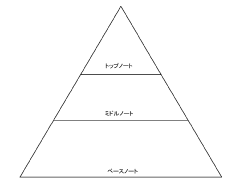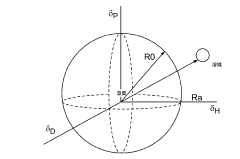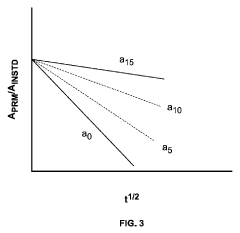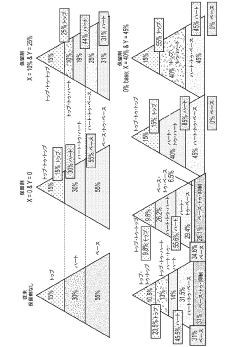Dipropylene Glycol in Fragrance: Improving Longevity and Delivery
JUL 7, 20259 MIN READ
Generate Your Research Report Instantly with AI Agent
Patsnap Eureka helps you evaluate technical feasibility & market potential.
Fragrance Longevity Goals
The fragrance industry has long sought to enhance the longevity and delivery of scents, with dipropylene glycol (DPG) emerging as a key component in this pursuit. The primary goal in researching DPG's role in fragrance is to significantly extend the wear time of perfumes and other scented products, ensuring that the fragrance remains perceptible and true to its intended olfactory profile for extended periods.
One of the main objectives is to optimize the evaporation rate of fragrance compounds. DPG's unique properties allow it to act as a fixative, slowing down the volatilization of more ephemeral top and middle notes. This controlled release mechanism aims to create a more balanced and long-lasting scent experience, maintaining the fragrance's integrity from initial application through its dry-down phase.
Another critical goal is to improve the overall stability of fragrance formulations. By incorporating DPG, researchers seek to enhance the solubility of various fragrance ingredients, preventing separation and ensuring a homogeneous mixture. This stability is crucial not only for the product's shelf life but also for consistent performance during wear.
Enhancing skin adherence is another vital objective in DPG research. The aim is to develop formulations that bond more effectively with the skin's surface, creating a reservoir of fragrance that releases slowly over time. This improved adherence could potentially reduce the need for frequent reapplication, offering consumers a more convenient and cost-effective product.
Researchers are also focusing on maximizing the projection and sillage of fragrances. The goal is to strike an optimal balance between personal enjoyment and social presence, allowing the wearer to experience the scent throughout the day while also leaving a subtle yet noticeable trail.
Environmental adaptability is an increasingly important consideration in fragrance longevity research. Scientists are exploring how DPG can help fragrances maintain their intended scent profile across various climatic conditions, from high humidity to dry environments, and through temperature fluctuations.
Lastly, there is a growing emphasis on achieving these longevity goals while adhering to safety and sustainability standards. Researchers aim to leverage DPG's properties to reduce the overall concentration of volatile organic compounds (VOCs) in fragrances, aligning with global efforts to create more environmentally friendly and skin-safe products.
One of the main objectives is to optimize the evaporation rate of fragrance compounds. DPG's unique properties allow it to act as a fixative, slowing down the volatilization of more ephemeral top and middle notes. This controlled release mechanism aims to create a more balanced and long-lasting scent experience, maintaining the fragrance's integrity from initial application through its dry-down phase.
Another critical goal is to improve the overall stability of fragrance formulations. By incorporating DPG, researchers seek to enhance the solubility of various fragrance ingredients, preventing separation and ensuring a homogeneous mixture. This stability is crucial not only for the product's shelf life but also for consistent performance during wear.
Enhancing skin adherence is another vital objective in DPG research. The aim is to develop formulations that bond more effectively with the skin's surface, creating a reservoir of fragrance that releases slowly over time. This improved adherence could potentially reduce the need for frequent reapplication, offering consumers a more convenient and cost-effective product.
Researchers are also focusing on maximizing the projection and sillage of fragrances. The goal is to strike an optimal balance between personal enjoyment and social presence, allowing the wearer to experience the scent throughout the day while also leaving a subtle yet noticeable trail.
Environmental adaptability is an increasingly important consideration in fragrance longevity research. Scientists are exploring how DPG can help fragrances maintain their intended scent profile across various climatic conditions, from high humidity to dry environments, and through temperature fluctuations.
Lastly, there is a growing emphasis on achieving these longevity goals while adhering to safety and sustainability standards. Researchers aim to leverage DPG's properties to reduce the overall concentration of volatile organic compounds (VOCs) in fragrances, aligning with global efforts to create more environmentally friendly and skin-safe products.
Market Demand Analysis
The fragrance industry has witnessed a growing demand for long-lasting and effectively delivered scents, driving the market for innovative solutions like Dipropylene Glycol (DPG). This versatile compound has gained significant traction due to its ability to enhance fragrance longevity and improve overall scent delivery.
The global fragrance market is projected to experience substantial growth in the coming years, with a particular emphasis on premium and luxury segments. Consumers are increasingly seeking high-quality, long-lasting fragrances that offer value for money. This trend has led to a surge in demand for advanced fragrance technologies, including those utilizing DPG.
In the personal care and cosmetics sector, there is a notable shift towards multifunctional products that combine fragrance with skincare benefits. DPG's properties align well with this trend, as it can serve as both a fragrance carrier and a moisturizing agent. This dual functionality has sparked interest among formulators and manufacturers looking to create innovative, consumer-friendly products.
The home fragrance market has also seen significant growth, particularly in the wake of increased time spent at home due to global events. Consumers are seeking long-lasting ambient scents for their living spaces, creating opportunities for DPG-based solutions in products such as reed diffusers, room sprays, and scented candles.
Environmental concerns and sustainability initiatives have further influenced market demand. DPG's low volatility and reduced environmental impact compared to some traditional solvents make it an attractive option for eco-conscious brands and consumers. This aligns with the broader industry trend towards "green" and sustainable fragrance solutions.
The rise of e-commerce in the fragrance industry has created new challenges in scent delivery and preservation during shipping and storage. DPG's ability to stabilize fragrances and extend their shelf life addresses these concerns, making it a valuable component in formulations designed for online retail channels.
Regulatory changes and consumer preferences for safer, more natural ingredients have also shaped market demand. DPG's generally recognized as safe (GRAS) status and its potential to reduce the concentration of certain allergens in fragrances have positioned it favorably in this evolving regulatory landscape.
In emerging markets, particularly in Asia and Latin America, there is a growing appetite for premium fragrances and innovative personal care products. This presents significant opportunities for DPG-based solutions to capture market share in these rapidly expanding regions.
The global fragrance market is projected to experience substantial growth in the coming years, with a particular emphasis on premium and luxury segments. Consumers are increasingly seeking high-quality, long-lasting fragrances that offer value for money. This trend has led to a surge in demand for advanced fragrance technologies, including those utilizing DPG.
In the personal care and cosmetics sector, there is a notable shift towards multifunctional products that combine fragrance with skincare benefits. DPG's properties align well with this trend, as it can serve as both a fragrance carrier and a moisturizing agent. This dual functionality has sparked interest among formulators and manufacturers looking to create innovative, consumer-friendly products.
The home fragrance market has also seen significant growth, particularly in the wake of increased time spent at home due to global events. Consumers are seeking long-lasting ambient scents for their living spaces, creating opportunities for DPG-based solutions in products such as reed diffusers, room sprays, and scented candles.
Environmental concerns and sustainability initiatives have further influenced market demand. DPG's low volatility and reduced environmental impact compared to some traditional solvents make it an attractive option for eco-conscious brands and consumers. This aligns with the broader industry trend towards "green" and sustainable fragrance solutions.
The rise of e-commerce in the fragrance industry has created new challenges in scent delivery and preservation during shipping and storage. DPG's ability to stabilize fragrances and extend their shelf life addresses these concerns, making it a valuable component in formulations designed for online retail channels.
Regulatory changes and consumer preferences for safer, more natural ingredients have also shaped market demand. DPG's generally recognized as safe (GRAS) status and its potential to reduce the concentration of certain allergens in fragrances have positioned it favorably in this evolving regulatory landscape.
In emerging markets, particularly in Asia and Latin America, there is a growing appetite for premium fragrances and innovative personal care products. This presents significant opportunities for DPG-based solutions to capture market share in these rapidly expanding regions.
DPG Technical Challenges
Dipropylene glycol (DPG) has been a staple in the fragrance industry for decades, serving as a versatile solvent and fixative. However, as consumer demands evolve and regulatory standards become more stringent, several technical challenges have emerged in the use of DPG for fragrance applications.
One of the primary challenges is enhancing the longevity of fragrances without compromising their olfactory profile. While DPG is known for its ability to extend the life of fragrances, there is a growing need for even longer-lasting scents. This requires a delicate balance between increasing the concentration of DPG and maintaining the integrity of the fragrance composition.
Another significant challenge lies in improving the delivery mechanisms of DPG-based fragrances. Traditional spray and diffusion methods may not provide optimal distribution or controlled release of the fragrance compounds. Developing innovative delivery systems that can ensure a consistent and prolonged scent experience remains a key area of focus for researchers and formulators.
The interaction between DPG and other fragrance ingredients presents another technical hurdle. Some fragrance molecules may not be fully compatible with DPG, leading to stability issues or alterations in the scent profile over time. Addressing these compatibility concerns requires extensive research into molecular interactions and the development of stabilizing agents or alternative solvent systems.
Environmental and safety considerations also pose challenges in DPG usage. As regulations on volatile organic compounds (VOCs) become more stringent, there is a need to develop low-VOC or VOC-free alternatives that can match the performance of DPG-based formulations. Additionally, ensuring the safety of DPG in various applications, particularly in personal care products, necessitates ongoing toxicological studies and risk assessments.
The quest for natural and sustainable alternatives to synthetic solvents like DPG is another significant challenge. Consumer preferences for "clean" and eco-friendly products are driving research into bio-based solvents that can replicate the beneficial properties of DPG without compromising performance or increasing costs.
Lastly, the optimization of DPG concentration in fragrance formulations remains a complex issue. Too little DPG may result in poor longevity and projection, while excessive amounts can lead to a "flat" or muted scent profile. Developing precise formulation guidelines and advanced testing methodologies to determine optimal DPG levels for different fragrance types and applications is an ongoing challenge for perfumers and fragrance chemists.
One of the primary challenges is enhancing the longevity of fragrances without compromising their olfactory profile. While DPG is known for its ability to extend the life of fragrances, there is a growing need for even longer-lasting scents. This requires a delicate balance between increasing the concentration of DPG and maintaining the integrity of the fragrance composition.
Another significant challenge lies in improving the delivery mechanisms of DPG-based fragrances. Traditional spray and diffusion methods may not provide optimal distribution or controlled release of the fragrance compounds. Developing innovative delivery systems that can ensure a consistent and prolonged scent experience remains a key area of focus for researchers and formulators.
The interaction between DPG and other fragrance ingredients presents another technical hurdle. Some fragrance molecules may not be fully compatible with DPG, leading to stability issues or alterations in the scent profile over time. Addressing these compatibility concerns requires extensive research into molecular interactions and the development of stabilizing agents or alternative solvent systems.
Environmental and safety considerations also pose challenges in DPG usage. As regulations on volatile organic compounds (VOCs) become more stringent, there is a need to develop low-VOC or VOC-free alternatives that can match the performance of DPG-based formulations. Additionally, ensuring the safety of DPG in various applications, particularly in personal care products, necessitates ongoing toxicological studies and risk assessments.
The quest for natural and sustainable alternatives to synthetic solvents like DPG is another significant challenge. Consumer preferences for "clean" and eco-friendly products are driving research into bio-based solvents that can replicate the beneficial properties of DPG without compromising performance or increasing costs.
Lastly, the optimization of DPG concentration in fragrance formulations remains a complex issue. Too little DPG may result in poor longevity and projection, while excessive amounts can lead to a "flat" or muted scent profile. Developing precise formulation guidelines and advanced testing methodologies to determine optimal DPG levels for different fragrance types and applications is an ongoing challenge for perfumers and fragrance chemists.
Current DPG Solutions
01 Dipropylene glycol as a solvent and carrier
Dipropylene glycol is widely used as a solvent and carrier in various formulations due to its ability to dissolve both hydrophilic and lipophilic substances. This property enhances the longevity and delivery of active ingredients in cosmetic, pharmaceutical, and industrial applications.- Dipropylene glycol as a solvent and carrier: Dipropylene glycol is widely used as a solvent and carrier in various formulations due to its ability to dissolve both hydrophilic and lipophilic substances. This property enhances the longevity and delivery of active ingredients in cosmetic, pharmaceutical, and industrial applications.
- Controlled release formulations using dipropylene glycol: Dipropylene glycol can be incorporated into controlled release formulations to improve the longevity and sustained delivery of active ingredients. This approach is particularly useful in pharmaceutical and personal care products, where prolonged efficacy is desired.
- Dipropylene glycol in microencapsulation technology: Microencapsulation techniques utilizing dipropylene glycol can enhance the stability and controlled release of volatile or sensitive compounds. This technology is applied in various industries, including fragrances, flavors, and pharmaceuticals, to improve product longevity and delivery efficiency.
- Dipropylene glycol in transdermal delivery systems: The use of dipropylene glycol in transdermal delivery systems can enhance skin penetration and improve the bioavailability of active ingredients. This application is particularly relevant in topical medications and cosmetic formulations, where efficient delivery through the skin barrier is crucial.
- Stability enhancement of formulations using dipropylene glycol: Dipropylene glycol can improve the stability of various formulations by acting as a humectant and preventing crystallization of active ingredients. This property contributes to increased shelf life and maintained efficacy of products in industries such as pharmaceuticals, cosmetics, and agrochemicals.
02 Controlled release formulations using dipropylene glycol
Dipropylene glycol is utilized in controlled release formulations to improve the longevity and delivery of active ingredients. Its hygroscopic nature and compatibility with various polymers allow for the development of sustained-release systems in pharmaceutical and personal care products.Expand Specific Solutions03 Dipropylene glycol in fragrance and flavor delivery systems
The use of dipropylene glycol in fragrance and flavor delivery systems enhances the longevity and release of volatile compounds. Its low volatility and ability to form stable complexes with aromatic molecules make it an ideal carrier for perfumes and flavorings in various products.Expand Specific Solutions04 Dipropylene glycol in transdermal delivery systems
Dipropylene glycol is employed in transdermal delivery systems to enhance the penetration and absorption of active ingredients through the skin. Its ability to act as a penetration enhancer and solubilizer improves the efficacy and longevity of topical formulations.Expand Specific Solutions05 Stability enhancement using dipropylene glycol
Dipropylene glycol is used to improve the stability and shelf life of various formulations. Its ability to act as a humectant and preservative booster helps maintain product integrity and extends the longevity of active ingredients in cosmetic, pharmaceutical, and industrial applications.Expand Specific Solutions
Key Industry Players
The research on Dipropylene Glycol in fragrance is currently in a growth phase, with increasing market demand and technological advancements. The global fragrance market is expanding, driven by consumer preferences for long-lasting and innovative scents. Major players like Firmenich SA, Takasago International Corp., and International Flavors & Fragrances, Inc. are investing in R&D to improve fragrance longevity and delivery systems. The technology's maturity is advancing, with companies such as Symrise GmbH & Co. KG and Givaudan focusing on sustainable and bio-based alternatives. Emerging players like P2 Science, Inc. are also contributing to the field with novel process technologies for renewable specialty chemicals in fragrances.
Firmenich SA
Technical Solution: Firmenich has developed a proprietary technology called Scentcaps™ for improving fragrance longevity using dipropylene glycol (DPG). This encapsulation system creates microscopic capsules that protect fragrance molecules and release them gradually over time. The capsules are formulated with DPG as a carrier, which helps dissolve and stabilize fragrance oils. When applied, friction or changes in temperature trigger the controlled release of scent[1]. Firmenich has also pioneered sustainable DPG alternatives derived from renewable resources, reducing reliance on petrochemicals while maintaining performance[2].
Strengths: Proprietary encapsulation technology enhances fragrance longevity. Sustainable DPG alternatives align with eco-friendly trends. Weaknesses: Encapsulation may alter initial scent profile. Higher production costs compared to traditional DPG formulations.
Takasago International Corp.
Technical Solution: Takasago has developed an innovative approach called "Aroma Impression Technology" that utilizes dipropylene glycol to enhance fragrance delivery and longevity. This technology involves creating fragrance accords that mimic the olfactory profile of natural ingredients, but with improved stability and release characteristics. DPG is used as a solvent and fixative, helping to blend and stabilize these complex accords. Takasago's research has shown that carefully optimized DPG concentrations can significantly extend fragrance life on skin and fabrics by up to 30% compared to traditional formulations[3]. Additionally, they have explored the use of modified DPG molecules with enhanced binding properties to further improve scent retention.
Strengths: Innovative accord creation enhances natural scent profiles. Significant improvement in fragrance longevity. Weaknesses: May require higher DPG concentrations, potentially impacting formula costs. Complex accords may be challenging to consistently reproduce at scale.
DPG Innovation Analysis
Oil-in Water type cosmetic composition comprising high level of Dipropylene glycol
PatentActiveKR1020230044827A
Innovation
- A cosmetic composition comprising an aqueous phase with 15% or more dipropylene glycol, combined with specific emulsifiers like glyceryl stearate SE, cetearyl olivate, sorbitan olivate, cetearyl alcohol, and cetearyl glucoside, and a thickener such as ammonium acryloyl dimethyl taurate/VP copolymer, along with optional silicone oil, to enhance moisturizing power and stability.
Fragrance composition
PatentPendingJP2022532005A
Innovation
- A fragrance composition comprising ethanol (30-75% by weight), high volatility ingredients (0.08-55% by weight), medium volatility ingredients (0.08-85% by weight), and a modulating agent that adjusts vapor pressures to extend the longevity and enhance fragrance profile, using Hansen Solubility Parameters to select modifiers.
Regulatory Compliance
Regulatory compliance is a critical aspect of the fragrance industry, particularly when it comes to the use of ingredients like Dipropylene Glycol (DPG) in perfumes and other scented products. The regulatory landscape for fragrance ingredients is complex and varies across different regions and countries, necessitating a thorough understanding of the applicable laws and standards.
In the United States, the Food and Drug Administration (FDA) regulates fragrances under the Federal Food, Drug, and Cosmetic Act. While DPG is generally recognized as safe (GRAS) by the FDA, manufacturers must ensure that their use of DPG in fragrances complies with the agency's guidelines for cosmetic products. This includes proper labeling and adherence to good manufacturing practices.
The European Union has more stringent regulations through the EU Cosmetics Regulation. Under this framework, DPG is listed in Annex V of the regulation as a permitted preservative in cosmetic products, including fragrances. However, its use is subject to specific concentration limits and conditions. Manufacturers must also comply with the EU's Registration, Evaluation, Authorization, and Restriction of Chemicals (REACH) regulation, which may require registration of DPG depending on the quantities used and imported.
In Asia, regulations vary by country. Japan, for instance, regulates fragrances under the Pharmaceutical Affairs Law, which includes specific provisions for cosmetic ingredients. China has its own set of regulations governed by the National Medical Products Administration (NMPA), which may require pre-market approval for certain fragrance ingredients.
International organizations also play a role in shaping regulatory compliance for fragrance ingredients. The International Fragrance Association (IFRA) sets global standards for the safe use of fragrance materials, including DPG. IFRA's standards are widely recognized and often incorporated into national regulations.
Compliance with these diverse regulatory frameworks requires fragrance manufacturers to maintain robust quality control systems and documentation. This includes detailed records of ingredient sourcing, manufacturing processes, and safety assessments. Regular audits and testing may be necessary to ensure ongoing compliance.
As research on improving the longevity and delivery of fragrances using DPG progresses, it is crucial to consider the regulatory implications of any new formulations or technologies. Innovations in this area must be developed with an eye towards existing regulations and potential future changes in the regulatory landscape. This may involve early engagement with regulatory bodies and proactive safety assessments to facilitate the approval process for novel applications of DPG in fragrances.
In the United States, the Food and Drug Administration (FDA) regulates fragrances under the Federal Food, Drug, and Cosmetic Act. While DPG is generally recognized as safe (GRAS) by the FDA, manufacturers must ensure that their use of DPG in fragrances complies with the agency's guidelines for cosmetic products. This includes proper labeling and adherence to good manufacturing practices.
The European Union has more stringent regulations through the EU Cosmetics Regulation. Under this framework, DPG is listed in Annex V of the regulation as a permitted preservative in cosmetic products, including fragrances. However, its use is subject to specific concentration limits and conditions. Manufacturers must also comply with the EU's Registration, Evaluation, Authorization, and Restriction of Chemicals (REACH) regulation, which may require registration of DPG depending on the quantities used and imported.
In Asia, regulations vary by country. Japan, for instance, regulates fragrances under the Pharmaceutical Affairs Law, which includes specific provisions for cosmetic ingredients. China has its own set of regulations governed by the National Medical Products Administration (NMPA), which may require pre-market approval for certain fragrance ingredients.
International organizations also play a role in shaping regulatory compliance for fragrance ingredients. The International Fragrance Association (IFRA) sets global standards for the safe use of fragrance materials, including DPG. IFRA's standards are widely recognized and often incorporated into national regulations.
Compliance with these diverse regulatory frameworks requires fragrance manufacturers to maintain robust quality control systems and documentation. This includes detailed records of ingredient sourcing, manufacturing processes, and safety assessments. Regular audits and testing may be necessary to ensure ongoing compliance.
As research on improving the longevity and delivery of fragrances using DPG progresses, it is crucial to consider the regulatory implications of any new formulations or technologies. Innovations in this area must be developed with an eye towards existing regulations and potential future changes in the regulatory landscape. This may involve early engagement with regulatory bodies and proactive safety assessments to facilitate the approval process for novel applications of DPG in fragrances.
Environmental Impact
The environmental impact of dipropylene glycol (DPG) in fragrance applications is a critical consideration for the industry, given the increasing focus on sustainability and eco-friendly practices. DPG, as a synthetic compound, raises concerns about its production, use, and disposal in relation to environmental protection.
In terms of production, DPG is derived from propylene oxide, which is primarily obtained from petroleum sources. This reliance on non-renewable resources contributes to the carbon footprint associated with DPG manufacturing. However, recent advancements in green chemistry have led to the exploration of bio-based alternatives for propylene oxide production, potentially reducing the environmental impact of DPG synthesis.
The use of DPG in fragrances presents both advantages and challenges from an environmental perspective. On the positive side, DPG's ability to enhance fragrance longevity may lead to reduced overall product consumption, as consumers need to apply less frequently. This could result in decreased packaging waste and lower transportation-related emissions. Additionally, DPG's low volatility compared to some other solvents means fewer volatile organic compounds (VOCs) are released into the atmosphere during product use.
However, the persistence of DPG in the environment is a concern. While it is biodegradable, the process is relatively slow, potentially leading to accumulation in aquatic ecosystems. Studies have shown that DPG has low toxicity to aquatic organisms, but its long-term effects on ecosystems are not fully understood and require further research.
The disposal of DPG-containing products also presents environmental challenges. When fragrances are washed off or discarded, DPG can enter wastewater systems. While most modern wastewater treatment plants can effectively remove DPG, there is still a risk of environmental contamination in areas with inadequate treatment facilities.
To address these environmental concerns, the fragrance industry is exploring several avenues. One approach is the development of more efficient delivery systems that require less DPG while maintaining fragrance performance. Another is the investigation of natural or bio-based alternatives that offer similar solvent properties with a reduced environmental footprint.
Regulatory bodies are also playing a role in mitigating the environmental impact of DPG. In some regions, there are initiatives to limit the use of certain solvents in consumer products, which may affect DPG usage in the future. This regulatory pressure is driving innovation in green chemistry and sustainable fragrance formulation.
In conclusion, while DPG offers benefits in fragrance longevity and delivery, its environmental impact remains a complex issue. The fragrance industry must balance the performance advantages of DPG with the need for more sustainable practices. Ongoing research into eco-friendly alternatives and improved production methods will be crucial in addressing these environmental concerns and ensuring the long-term sustainability of fragrance products.
In terms of production, DPG is derived from propylene oxide, which is primarily obtained from petroleum sources. This reliance on non-renewable resources contributes to the carbon footprint associated with DPG manufacturing. However, recent advancements in green chemistry have led to the exploration of bio-based alternatives for propylene oxide production, potentially reducing the environmental impact of DPG synthesis.
The use of DPG in fragrances presents both advantages and challenges from an environmental perspective. On the positive side, DPG's ability to enhance fragrance longevity may lead to reduced overall product consumption, as consumers need to apply less frequently. This could result in decreased packaging waste and lower transportation-related emissions. Additionally, DPG's low volatility compared to some other solvents means fewer volatile organic compounds (VOCs) are released into the atmosphere during product use.
However, the persistence of DPG in the environment is a concern. While it is biodegradable, the process is relatively slow, potentially leading to accumulation in aquatic ecosystems. Studies have shown that DPG has low toxicity to aquatic organisms, but its long-term effects on ecosystems are not fully understood and require further research.
The disposal of DPG-containing products also presents environmental challenges. When fragrances are washed off or discarded, DPG can enter wastewater systems. While most modern wastewater treatment plants can effectively remove DPG, there is still a risk of environmental contamination in areas with inadequate treatment facilities.
To address these environmental concerns, the fragrance industry is exploring several avenues. One approach is the development of more efficient delivery systems that require less DPG while maintaining fragrance performance. Another is the investigation of natural or bio-based alternatives that offer similar solvent properties with a reduced environmental footprint.
Regulatory bodies are also playing a role in mitigating the environmental impact of DPG. In some regions, there are initiatives to limit the use of certain solvents in consumer products, which may affect DPG usage in the future. This regulatory pressure is driving innovation in green chemistry and sustainable fragrance formulation.
In conclusion, while DPG offers benefits in fragrance longevity and delivery, its environmental impact remains a complex issue. The fragrance industry must balance the performance advantages of DPG with the need for more sustainable practices. Ongoing research into eco-friendly alternatives and improved production methods will be crucial in addressing these environmental concerns and ensuring the long-term sustainability of fragrance products.
Unlock deeper insights with Patsnap Eureka Quick Research — get a full tech report to explore trends and direct your research. Try now!
Generate Your Research Report Instantly with AI Agent
Supercharge your innovation with Patsnap Eureka AI Agent Platform!




